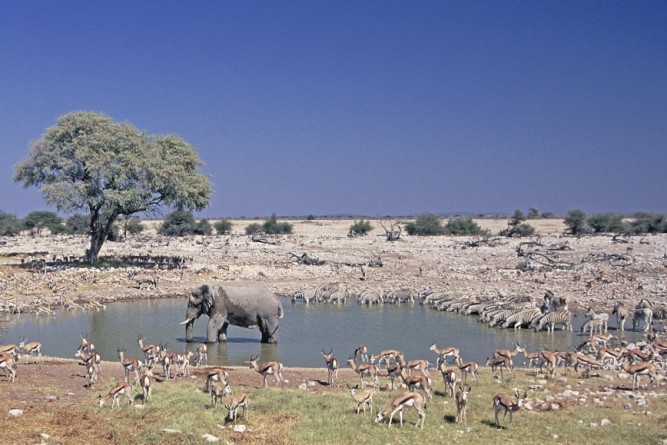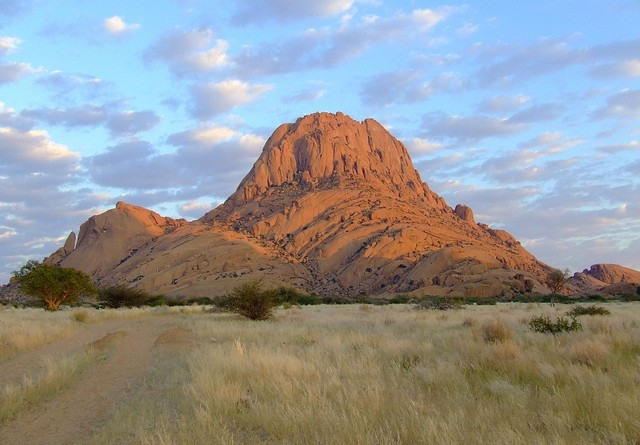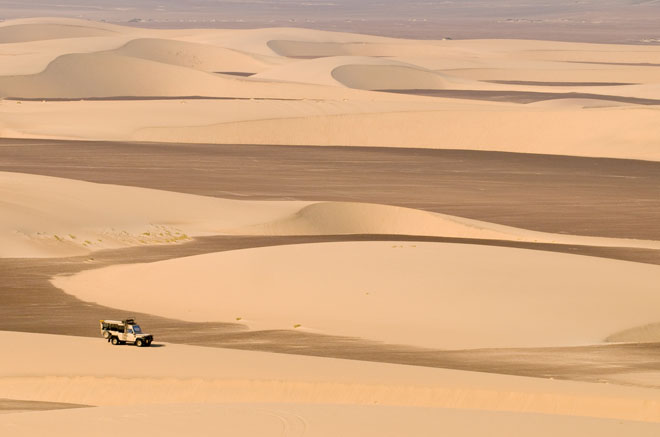In the first episode of Africa, the newest nature series from the BBC Natural History Unit, David Attenborough refers to Africa as ‘the world’s greatest wilderness.’ The episode focused on the Kalahari, showing the magnificence of this dry and ancient part of our continent in a degree of detail that we’ve never seen before.
If your imagination was sparked by some of the beautiful scenes, these locations should join your travel aspirations.

Photo courtesy of Alan Murray
Okaukuejo Waterhole, Namibia
We’re glad that the BBC didn’t name the ‘secret watering hole’ where large numbers of black rhino flirt and socialize. We certainly wouldn’t want poachers getting hold of this information. However, within the realm of information that’s already available about black rhinos, there are plenty of places you could visit in hopes of meeting these beautiful creatures – with a new-found appreciation for how charming and friendly they can be (to each other, at least). We’d particularly suggest Okaukuejo waterhole, within the Etosha National Park: it’s considered by many to be the best place in Africa to see the endangered and solitary-natured black rhino.
Read our guide to Etosha National Park here

Photo courtesy of mpaskevi
Spitzkoppe, Namibia
This beautiful area of Nambia is treated with sweeping helicopter shots, showcasing the massive granite boulders’ majesty. Adventurous types all over the world were probably thinking, ‘Man, imagine rock-climbing there!’ If you’re in Southern Africa, it doesn’t have to be such a faraway dream. Spitskoppe is in an area of Namibia where you can camp, hike, and rock-climb to your heart’s desire. Another lovely feature is that only 20 people may stay at the campsite at one time.
Find out more info on visiting Spitzkoppe here find out more here
Dragon’s Breath Cave, Kalahari
Visiting the world’s largest underground lake is quite an extensive trip. Seeing as it’s located many meters below the earth, the most sophisticated caving and diving apparatus is required. Still, it’s the only place to see the world’s most isolated, rarest fish: golden catfish. They, unfortunately, won’t see you, as they are totally blind.
If hiring and transporting the most sophisticated equipment available (as well as organising your own transport) doesn’t sound like your idea of a relaxing holiday, there are other options. Lake Otjikoto combines accessibility with mystery: its depth still hasn’t been determined, but is rumoured to exceed 140 metres. Instead of golden catfish, you’ll find Tilapia guinasana and vintage German artillery (it needed to be destroyed before surrender at the end of WWI, apparently).

Skeleton Coast, Namibia
The footage of a golden-wheel spider careering down a dune was pretty spectacular. The Namib desert is the oldest desert in the world, and its dunes attract a variety of 4x4ers and sandboarders. Towards the western edge however, Namibia’s Skeleton Coast has a very different sort of appeal. Shipwrecks scatter the coast, extending up to Angola, giving the place its eerie name. The town of Kolmanskop is a popular tourist attraction, as a relic of diamond rush in the early 1900s. Apparently the diamonds used to be visible by the light of the moon, glittering in the dunes. Nowadays, however, its a ghost town that requires a permit before entry.
Find more ideas for awesome trips to Namibia here
Looking for a place to stay? Check out these accommodation options in Namibia















